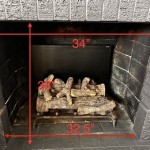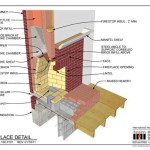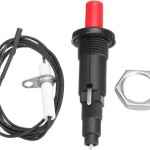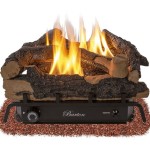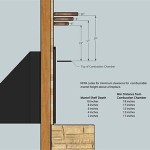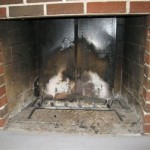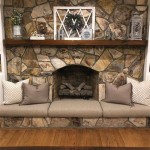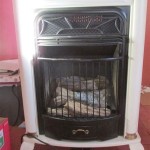Fireplace Protectors for Babies: Ensuring a Safe Home Environment
Fireplaces, while aesthetically pleasing and often a focal point in a home, present a significant safety hazard for babies and young children. A curious infant, exploring their surroundings, may be drawn to the fireplace's warmth or intriguing appearance. The potential for burns, cuts from sharp edges, or even falls is a serious concern for parents. Implementing appropriate safety measures, specifically through the use of fireplace protectors, is crucial to mitigate these risks and create a secure living space.
The market offers a wide array of fireplace protection devices designed to address different fireplace types and parental preferences. These range from simple fireplace screens to elaborate, custom-fitted enclosures. Understanding the specific needs of one's home and the developmental stage of the child is essential when selecting the appropriate protection.
Understanding the Hazards Fireplaces Pose to Babies
The primary risk associated with fireplaces is the potential for burns. Babies lack the understanding of cause and effect and may not realize that touching a hot surface will result in pain and injury. The surface temperature of a fireplace, even one that has been extinguished for a period, can remain dangerously high, leading to severe burns upon contact. The glass doors commonly found on many fireplaces can also become extremely hot during and after use, presenting another burn hazard.
Beyond burns, the physical structure of a fireplace can present other dangers. Sharp edges on the hearth or brickwork can cause cuts and scrapes. An open firebox poses a risk of falling, especially for toddlers who are still developing their balance and coordination. Loose bricks or stones can also become dislodged and pose a choking hazard if ingested.
Furthermore, even when a fire is not actively burning, soot and ash residue can be harmful if ingested or inhaled by a baby. These substances can irritate the skin and respiratory system. Therefore, maintaining a clean and secure fireplace area is paramount for infant safety.
Types of Fireplace Protectors Available
The selection of a fireplace protector should be based on several factors, including the fireplace's design, the home's aesthetic, and the level of protection required. Each type offers varying degrees of safety and visual appeal.
Fireplace Screens: These are the most common and often the most affordable option. They typically consist of a metal mesh screen that sits in front of the fireplace opening. Fireplace screens prevent embers and sparks from flying out of the fireplace and can also provide a barrier to prevent direct contact with the fire or hot surfaces. However, they may not offer complete protection as they can be easily moved or toppled over by a determined child. Furthermore, the screen itself can become hot, potentially presenting a burn hazard.
Fireplace Fences or Enclosures: These provide a more comprehensive barrier, typically encompassing the entire hearth area. They are usually made of metal or wood and are designed to be securely anchored to the wall or floor, making them more difficult for children to move or climb. Fireplace fences are available in various sizes and styles to complement different home décor. These fences offer a greater level of protection against burns, cuts, and falls, as they create a physical boundary between the child and the fireplace.
Hearth Guards: These are designed to protect against sharp edges and hard surfaces on the hearth. They are typically made of a soft, impact-absorbing material, such as foam or rubber, and are attached to the edges of the hearth using adhesive. Hearth guards can help prevent injuries from bumps and falls, especially for toddlers who are learning to walk. While they don't prevent burns, they significantly reduce the risk of other common fireplace-related injuries.
Custom Fireplace Guards: For fireplaces with unique shapes or sizes, custom-made guards may be the best option. These are specifically designed to fit the fireplace perfectly, providing maximum protection. Custom guards can be made from various materials and can be tailored to match the home's décor. While they are generally more expensive than off-the-shelf options, they offer the highest level of safety and aesthetic integration.
Key Considerations When Choosing a Fireplace Protector
Selecting the right fireplace protector requires careful consideration of several factors to ensure optimal safety and suitability for the home environment.
Secure Attachment: The protector must be securely attached to the wall or floor to prevent it from being easily moved or toppled over by a child. Look for protectors that come with secure mounting hardware and follow the manufacturer's instructions carefully during installation. If the protector is not securely attached, it can become a hazard itself.
Heat Resistance: The materials used in the protector should be heat-resistant to prevent them from melting, warping, or becoming hot to the touch. Metal is a common choice for fireplace protectors due to its durability and heat resistance. Ensure that any wooden components are treated with a fire-retardant coating.
Gap Size: The gaps in the protector should be small enough to prevent a child from reaching through and touching the fireplace. A general guideline is that gaps should be no larger than 2 inches. Pay close attention to the gaps at the bottom of the protector, as these are often overlooked but can pose a significant risk.
Ease of Use: The protector should be easy for adults to operate but difficult for children to manipulate. Consider features such as child-proof latches or hinges that prevent children from opening or removing the protector. The protector should also be easy to remove for cleaning or maintenance purposes.
Aesthetic Integration: While safety is the primary concern, it's also important to choose a protector that complements the home's décor. Fireplace protectors are available in various styles and finishes to match different aesthetic preferences. Consider the color, material, and design of the protector to ensure that it blends seamlessly with the existing décor.
Ultimately, selecting and installing a fireplace protector is a vital step in creating a safe environment for babies and young children. By understanding the risks associated with fireplaces and carefully considering the various protection options available, parents can significantly reduce the likelihood of injuries and ensure peace of mind.

Fireplace Screen Mesh Cover Baby Proof To Prevent And Pet Near Idle Safety 29 X 40 Inch Com

Fireplace Screen Mesh Cover Baby Proof To Prevent And Pet Near Idle Safety 29 X 40 Inch Com

Protect Your Baby With Our Child Safety And Proofing

Child Proof Coffee Table Cover Collection Baby The Fireplace Hearth With A Padded Bench Childproof

Wood Stove Gas Hearth Gate G3111g4301 G4311 Friendly Fires

Baby Safety Foam Soft Seat Edge Cushion Fireplace Hearth Guard Bumper Pad Child Proof Padding

Fireplace Screen Mesh Cover Safe Baby Proofing Fire Place For The Living Room Indoor Gate Child Safety Kids Toddler And Pets 39 W X 32 H Yahoo Ping

Diy Fireplace Hearth Idea For Child Proofing

Fireplace Fence Guard 5 Panel Baby Safety Gates Protection

Fireplace Cover Child Proofing The Stone Hearth Gray And White Stripes Chevron Print Pillows Ho Baby Proof Childproof
Related Posts

